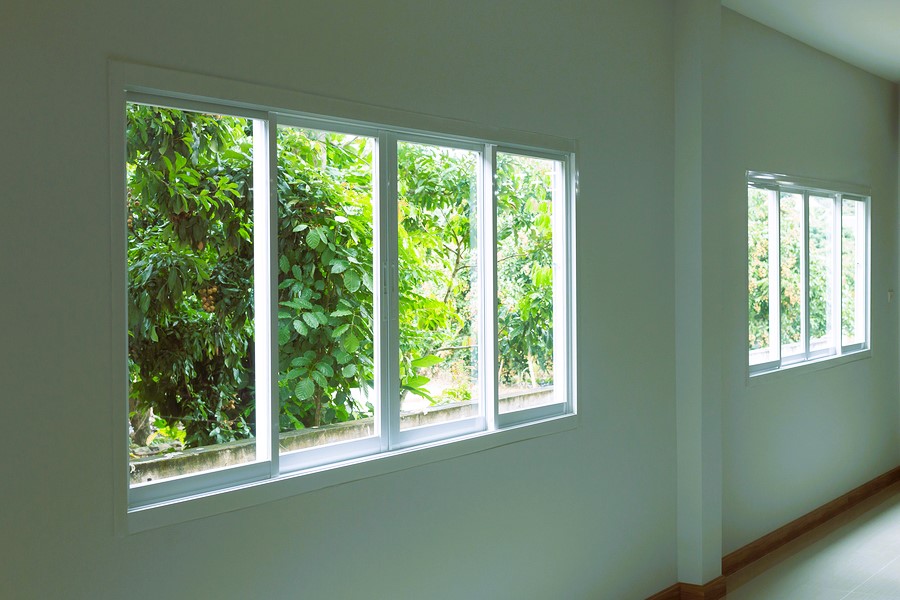Windows play a crucial role in our homes, providing natural light, ventilation, and a view to the outside world. However, over time, windows can experience wear and tear, leading to various issues that require repairs. It’s important for homeowners to be able to identify signs of window damage to address them promptly and prevent further problems. In this article, we will discuss common signs of window damage and when it’s time to consider window repairs.
1. Drafts and Air Leaks
Feeling drafts or experiencing air leaks around your windows is a clear indication of a problem. These drafts can significantly impact the energy efficiency of your home, causing your heating or cooling system to work harder and increasing energy costs. To identify drafts, run your hand along the edges of the window frame and feel for any cold air coming in. Additionally, if you notice a noticeable temperature difference near the windows, it’s a sign that there may be air leaks. Repairing or replacing weatherstripping, caulking, or seals can help address these issues and improve energy efficiency.
2. Moisture or Condensation

Moisture or condensation between window panes is a sign of seal failure. Double or triple glazed windows are designed to have a sealed space between the glass panes that provides insulation. When the seal is compromised, moisture can enter, causing fogging or condensation to form. This not only affects the visibility through the window but also indicates reduced insulation properties. In such cases, the window may need to be repaired or replaced to restore its functionality.
3. Difficulty Opening or Closing
Windows should open and close smoothly without any difficulty. If you find it challenging to open or close your windows, it could indicate various issues. It may be due to damaged or worn-out hardware, such as hinges or locks, which can affect the window’s functionality. It’s important to address these issues promptly to ensure proper ventilation, security, and ease of use. Repairs may involve replacing hardware components or adjusting the window frame to allow for smoother operation.
4. Cracked or Damaged Glass
Cracked or damaged glass is an obvious sign that window repairs are needed. Whether it’s due to impact, extreme weather conditions, or natural wear and tear, damaged glass compromises the integrity and security of your windows. Cracks can expand over time, leading to further damage and potential safety hazards. In such cases, replacing the glass or the entire window may be necessary, depending on the extent of the damage.
5. Warped or Rotting Frames
Window frames can be susceptible to moisture damage, especially in humid or rainy climates. Over time, this moisture can cause frames to warp, rot, or deteriorate. Warped frames may result in gaps or misalignment, leading to drafts, air leaks, and difficulty operating the windows. Rotting frames not only compromise the window’s functionality but also pose potential structural issues. If you notice signs of frame damage, it’s essential to address them promptly. Repairs may involve treating or replacing the affected frames to restore their integrity and prevent further damage.
6. Excessive Noise and Vibrations
If you notice that outside noise easily penetrates through your windows or if you experience vibrations from nearby traffic or other sources, it may indicate that your windows are not providing adequate sound insulation. This can be a result of damaged or insufficient weatherstripping, seals, or glass. Upgrading or repairing these components can help reduce noise transmission, creating a quieter and more comfortable indoor environment.

7. Fading Furniture and Flooring
Excessive sunlight can cause furniture, flooring, and other interior surfaces to fade over time. If you notice significant fading near your windows, it may indicate that the windows are not providing sufficient UV protection. Upgrading to windows with low-emissivity (Low-E) coatings or tinted glass can help minimize UV rays and protect your belongings from fading. Exploring the latest trends in window design, read more here.
Conclusion
Identifying signs of window damage is crucial for maintaining the functionality, energy efficiency, and aesthetic appeal of your home. By paying attention to drafts, moisture, difficulty opening or closing, cracked glass, warped frames, excessive noise, and fading furniture, you can proactively address window issues and determine when repairs or replacements are necessary. Regular window inspections and maintenance can help extend the lifespan of your windows and ensure a comfortable and secure living environment. If you notice any signs of window damage, it’s recommended to consult with a professional window contractor to assess the extent of the damage and recommend appropriate repair solutions.
